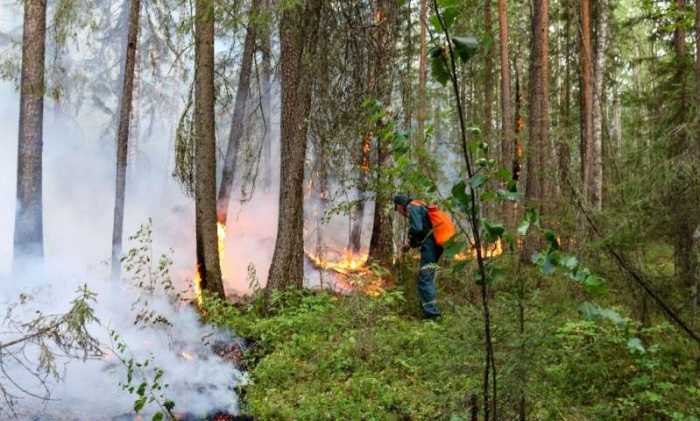
More than 100 firefighters and volunteers were trying to douse the flames of a fire outside the city of Yugorsk in the Khanty-Mansi Autonomous District, just one of several areas affected.
“A fire line has been ploughed around it, so the fire is not a threat, but when the wind turns, the smoke goes into the city,” the chief of Yugorsk administration’s emergencies department, Alexei Maksimenyuk, told AFP.
Photos of Yugorsk and other cities showed residential buildings under a blanket of white smog.
Yakutsk, the main city in the region of Yakutia with more than 300,000 residents, has been badly affected, according to images shot by local cameraman Ivan Semyonov, who posted them on Instagram on Wednesday.
The Yakutia region’s environment ministry said that the smoke was from large wildfires raging in remote areas, while the health watchdog told residents to stay indoors and refrain from physical exercise.
A heatwave caused by changing climate in northern Siberia has contributed to the severity of fires this year, but environmentalists also point the finger at poor forest management and lack of funding for fire prevention.
Russia’s Prime Minister Mikhail Mishustin said during a government meeting Thursday that it will allocate 2.6 billion rubles ($36.5 million) to the regions for suppressing forest fires.
Russia’s aerial forest protection service, the agency that specialises in forest fires, said on Wednesday that more than 5,000 people are working on 197 fires across Russia in an area of over 40,000 hectares (99,000 acres), including eight in nature reserves. However the biggest wildfires, over an area of 382,436 hectares, are not attended to under the policy in Russia that allows remote wilderness to be only monitored from space.
The policy was subject to major criticism last summer, when smoke enveloped some of Siberia’s largest cities, and over 1.2 million people signed a petition demanding the crisis be dealt with.

